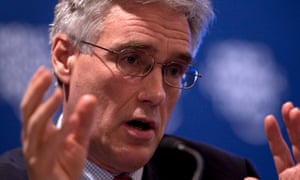The Efficient Markets Fallacy
Markets are considered efficient in certain aspects because they have the potential to allocate resources efficiently, respond to changes in supply and demand, and facilitate mutually beneficial transactions between buyers and sellers. This efficiency arises from the following factors:
Price mechanism: Markets utilize the price mechanism, where prices are determined by the interaction of supply and demand. This mechanism helps in efficiently allocating resources as prices adjust based on changes in supply and demand conditions. For example, when the demand for a particular product increases, its price rises, signaling producers to increase production to meet the demand. This responsiveness allows resources to be directed to where they are most valued, leading to efficiency.
Competition: In competitive markets, multiple buyers and sellers compete with each other, leading to increased efficiency. Competition incentivizes businesses to improve their products, reduce costs, and innovate, ultimately benefiting consumers. For example, when multiple companies produce similar goods, they are motivated to offer better quality or lower prices to attract customers. This competition can drive efficiency improvements over time.
Profit motive: In a capitalist system, the profit motive serves as an incentive for individuals and businesses to make efficient decisions. When individuals seek to maximize their profits, they are driven to allocate resources in the most productive and efficient ways. For instance, if a business realizes that a particular product line is not generating sufficient profits, it may reallocate resources to more profitable areas, contributing to overall efficiency.
Flexibility and adaptability: Markets are often more flexible and adaptable compared to centralized planning systems. They can quickly respond to changes in supply, demand, and consumer preferences. This adaptability allows resources to be reallocated efficiently, ensuring that goods and services align with consumer needs. For example, if a new technology emerges, markets can swiftly adjust by reallocating resources to support its development and meet the changing demand.
However, while markets can be efficient in certain respects, it is important to recognize their limitations and the factors that can hinder their efficiency. Let's understand this concept with simple examples:
Market concentration: In some industries, a few large companies can dominate the market, resulting in market concentration. These companies may have significant market power, enabling them to set prices, limit competition, and control supply. For example, imagine a telecommunications industry where only a handful of companies operate. This concentration can lead to reduced choices for consumers and hinder new entrants from competing. The efficient markets fallacy does not account for the potential negative effects of market concentration on competition and consumer welfare.
Monopolies: A monopoly occurs when a single company has exclusive control over a particular market. This lack of competition can result in inefficiency and reduced innovation. For instance, imagine a pharmaceutical company that holds a patent for a life-saving drug without any competing alternatives. This monopoly power allows the company to set high prices, limiting access to the medication. The efficient markets fallacy does not address the potential harm caused by monopolistic behavior and the need for regulations to promote competition.
Inequitable distribution of resources: The efficient markets fallacy assumes that resources are distributed fairly and efficiently in a capitalist economy. However, in reality, the distribution of resources can be highly unequal. For example, wealth and income disparities can arise, with a small portion of the population holding a significant share of resources while others struggle to meet their basic needs. This inequitable distribution can lead to social unrest and hinder overall economic growth. The efficient markets fallacy does not adequately consider the need for interventions and policies to address the inequitable distribution of resources.
Externalities and public goods: Efficient markets do not always account for externalities, which are the costs or benefits that affect third parties not involved in market transactions. For instance, pollution from factories imposes costs on the environment and public health. Without government intervention, the market may not internalize these costs, leading to inefficient outcomes. Additionally, markets may underprovide public goods like education or healthcare, which have broader societal benefits. The efficient markets fallacy fails to address the need for government intervention to address externalities and ensure the provision of public goods.
In summary, the "efficient markets" fallacy fails to address the issues of market concentration, monopolies, inequitable distribution of resources, and the provision of public goods. Recognizing these limitations is crucial for understanding the need for regulations, competition policies, and interventions to promote fair competition, address market failures, and ensure a more equitable distribution of resources in a capitalist economy.





